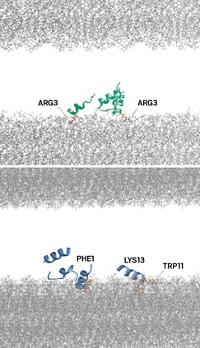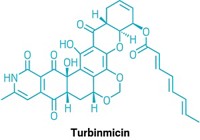Advertisement
Grab your lab coat. Let's get started
Welcome!
Welcome!
Create an account below to get 6 C&EN articles per month, receive newsletters and more - all free.
It seems this is your first time logging in online. Please enter the following information to continue.
As an ACS member you automatically get access to this site. All we need is few more details to create your reading experience.
Not you? Sign in with a different account.
Not you? Sign in with a different account.
ERROR 1
ERROR 1
ERROR 2
ERROR 2
ERROR 2
ERROR 2
ERROR 2
Password and Confirm password must match.
If you have an ACS member number, please enter it here so we can link this account to your membership. (optional)
ERROR 2
ACS values your privacy. By submitting your information, you are gaining access to C&EN and subscribing to our weekly newsletter. We use the information you provide to make your reading experience better, and we will never sell your data to third party members.
Global Health
Lilly partners with OpenAI to develop novel antibiotics
The partnership is the latest example of recruiting artificial intelligence in the fight against antimicrobial resistance
by Aayushi Pratap
June 27, 2024
| A version of this story appeared in
Volume 102, Issue 20

Eli Lilly and Company has partnered with OpenAI, maker of the generative AI platform ChatGPT, to invent new antibiotics.
Lilly says antimicrobial resistance (AMR) affects countries in all regions and at all income levels. But it is exacerbated by poverty and inequality, particularly in low- and middle-income countries.
The Indiana-based drug company says the collaboration supports its earlier commitment, through its Social Impact Venture Capital Portfolio, of $100 million to the industry-backed AMR Action Fund. Lilly says the action fund aims to provide patients with two to four new antibiotics by 2030.
According to the World Health Organization, 4.95 million deaths yearly are associated with AMR.
This year, OpenAI also partnered with Sanofi and Formation Bio to build AI-powered software for drug development.
James Zou, associate professor of biomedical data science at Stanford University, calls the Lilly-OpenAI partnership an exciting development for drug discovery. “OpenAI is increasingly interested in biotech, specifically new drug discovery,” Zou says. “I believe that generative AI will play a very important role in discovering new molecules.”
Academic research groups such as Zou’s use generative AI more and more to synthesize new antibiotics. This year, Zou’s team and McMaster University researchers reported a new model called SyntheMol, which can spell out chemical recipes for antibiotic molecules (Nature, DOI: 10.1038/s42256-024-00809-7). Using the platform, the authors shortlisted six novel antibiotics capable of killing drug-resistant strains of Acinetobacter baumannii.
Another study, published in Nature last December by researchers from the Massachusetts Institute of Technology, highlighted AI’s power in drug discovery (DOI: 10.1038/s41586-023-06887-8). The team used deep learning to identify antibiotic compounds that kill methicillin-resistant Staphylococcus aureus.
Felix Wong, the Nature study’s lead author and cofounder of the AI-based drug discovery start-up Integrated Biosciences, is bullish on the role AI can play in synthesizing novel molecules and identifying new antibiotic drug targets. “AI is a crucial tool in navigating the vast landscape of potential drug compounds,” Wong says.




Join the conversation
Contact the reporter
Submit a Letter to the Editor for publication
Engage with us on Twitter